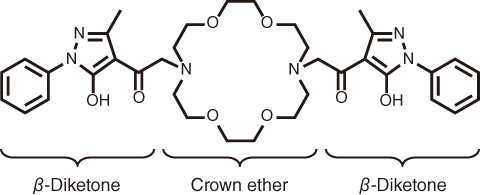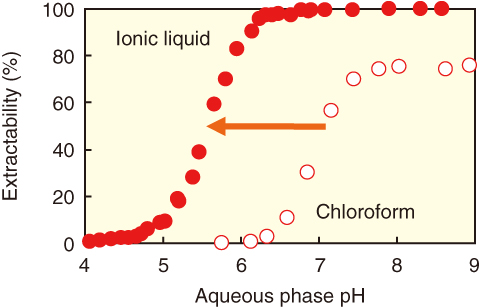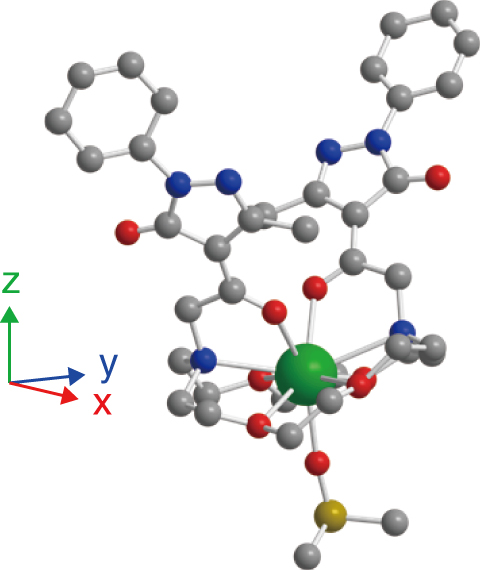
Fig.4-13 Chemical structure of the macrocyclic compound

Fig.4-14 Extraction of strontium in the ionic liquid and chloroform

Fig.4-15 Crystal structure of the strontium complex extracted into chloroform
 ) is coordinated by six oxygen (
) is coordinated by six oxygen ( ) and two nitrogen (
) and two nitrogen ( ) atoms from the macrocyclic compound and one oxygen (
) atoms from the macrocyclic compound and one oxygen ( ) atom from the solvent.
) atom from the solvent.  and
and  are carbon and sulfur atoms, respectively.
are carbon and sulfur atoms, respectively.Strontium-90 (90Sr), which is a fission product, is a β-ray emitting nuclide with a half-life of 28.8 years. In the human body, it accumulates in the bones. Thus, an efficient technique is required to remove 90Sr from contaminated soil and seawater.
One effective technique to separate and remove metal ions including radionuclides is solvent extraction, which is a technique for extracting a target substance from an aqueous solution into an organic solvent (containing extractants) immiscible with water. This technique is widely used in industry to separate and recover rare metals.
As an extractant for strontium, we synthesized a macrocyclic compound (Fig.4-13) bearing two β-diketone moieties and used it to investigate solvent extraction with an ionic liquid. Ionic liquids have received significant attention recently as a replacement for organic solvents in the extracting medium. Ionic liquids are room-temperature molten salts composed only of ions and are expected to serve as functional solvents with unprecedented advantages due to their properties, which differ from those of conventional solvents.
To evaluate the advantages of using an ionic liquid as an extracting solvent to extract strontium ions, we compared the characteristics of the ionic liquid for extraction with those of chloroform, which is known as a general extracting solvent (organic solvent). We thus clarified that the extraction of strontium using the ionic liquid was remarkably enhanced compared with that using chloroform (Fig.4-14). A subsequent study comparing the extraction into the ionic liquid with that into chloroform shows that the 1:1 complex of strontium forms with the macrocyclic compound and is extracted in both systems. Analysis of the crystal structure of the complex extracted into chloroform reveals that strontium is encapsulated in the cavity of the ring and is coordinated by the two β-diketone moieties (Fig.4-15).
Furthermore, to understand why extraction into the ionic liquid is enhanced compared with chloroform, the structures of the complexes extracted into both solvents were analyzed by X-ray absorption spectroscopy. The strontium–oxygen distance in the complex in the ionic liquid is 2.51 Å, which is less than the distance found for the complex in chloroform (2.55 Å). Therefore, we conclude that strontium is more strongly held in the ionic liquid and the shorter strontium–oxygen distance leads to the enhanced extraction.
The present study was accomplished in collaboration with Kanazawa University.